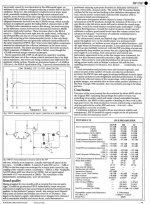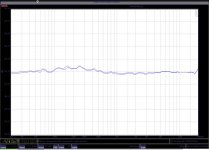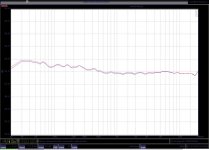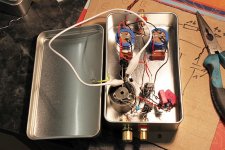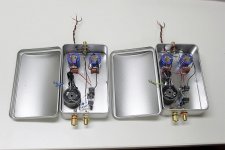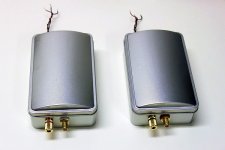OK, but I wouldn't use Windoz to look out of - I'm a Mac man.
I find no way to save the pix to disk. If it was a simple attachment, no problem.
Regards, Allen
I use Firefox on my Mac.
Expand the pic by clicking on it, mouse to menu bar "File" and click on "Save Frame As".
i can read the file on a mac with bootcamp. i know the designer of the PIP very well. it is Paul Mills that now works for Tannoy. in the 90th Paul and i did some postgraduate lectures at Essex but i never have seen the circuit until now, so many thanks. it fits well in my collection of forrunners. i build the inductive RIAA today and i am extremely exited.
sorry for not telling you more today but i am quite exausted with my dayjob and need some rest today. i am now going into my listening room for some leasure and will shurly fire up the inductors.
sorry for not telling you more today but i am quite exausted with my dayjob and need some rest today. i am now going into my listening room for some leasure and will shurly fire up the inductors.
salas i know the AD797 pretty well and use it in my commercial offerings. after nearly 20 years in production it is still one of the lowest distortion ops ever made. i use it , in fact 16 ! of them in my Goldstandart pre-pre and can not measure any distortion down to -150dB. i use a special feedback structure i call transimpedance instrumentation amplifier that takes advantage of it´s exeptional transfer linearity. i do not use the recommended compensation caps because they do not work in my circuit. by the way the goldstandart has no capacitor and no servo in the chain. it is just resistors and amplifiers.
i just come back for my first encounter with an alien. so no technical talk today. the first thing i noticed was that there was quite an amount of humm with the inductive RIAA and i had to work hard to reduce it to unobjectionable levels. although the coils are in seperate shielded boxes they influence each other quite strongly and tomorrow i will build cages around them. after finding the best position of the boxes some listening could start. at first i was thinking i had exchanged my Titan for a vintage Koetsu and the first nickname for the inductive stage was "dark side of the moon". i know that hum can soften the sound and the big Elcap does not promote DC eather but there was a smooth presentation cut from one silky cloth i have not experienced before. later i changed the nicname into "death of tube". that stage has a sound that is very reminissent of vintage tube, good and bad. surface noise and hiss is suppressed in a singular impressive way leaving only the intruments and voices fully fleshed out. it does not have the rasor precission and speed of the more conventional stage i tried last time so i was more drawn into classic jazz and records known for some anoying clics and pops. the way it handles surface blemishes is that it seperates them into the speakers and mutes the top of that anoying sounds leaving the music in the vast space that opens up now. although not lit up as much from the inside as the capacitor iq stage the size of the soundstage was in no way diminished on the contrary instruments like the soprano sachsophone on "Return to Forever" ocupied generous space slightly left of the right speaker, a hattrick only select phonostages can pull of. in most cases the soprano is confined to the size of the right speaker. anyway, i have to learn how to make good use of that properties and it feels like a great adventure is before me to explore. i am also not shure if i made the right choices in opamps but they are on sockels so i can change them. momentaryly i have OP134 in the fisrt stage and LT1468 in the second a rather exotic combination of an old chestnut and an 18bit ruthless precission amp.
look at that circuit diagram. i came up with it to make use of the Interfet 750mS part and have posted it before here. i am honestly shocked to find a lot of similarities with the PIP without knowing it´s innards. does Malkolm use thelepathy to steer me ?
Attachments
today i solved the mystery of the dark sound. i had measured the RIAA stage only without the headamp. in the headamp there was still one capacitor to ground i had experimented with and that had a too big value. replacing it with the correct value solved the problem. sorry, i will be more carefull next time before i do a subjective appraisal posted here.
i promised more explanation of the circuit and here it comes.
first look at the circuit diagrams. first is the headamp as is now and then come two versions of the inductive RIAA. one AC coupled and one with a servo and class a bias.
i promised more explanation of the circuit and here it comes.
first look at the circuit diagrams. first is the headamp as is now and then come two versions of the inductive RIAA. one AC coupled and one with a servo and class a bias.
Attachments
C5 and the 340 Ohm resistor make a 2.2usec time constant right there in the headamp. this is a kind of scratch filter that lowers the slew rate of in coming high frequency junk from record blemishes. it also rolls of the treble over 20kHz to ultimately zero because i do the 75usec active with parallel feedback in the outputstage that can only reduce the gain to one. you can leave C5 out if you trust in cutterhead compensation. ok, it is not exactly the infamous 3.3usec ( that is wrong by the way, i can show literature of the Neumann cutter with other data) but it does even less damage if you leave C5 out. the RIAA curves i will publish show the result without C5. 20kHz is up only 0.2dB. i left it out for the up coming listening session and will insert it later for comparison.
the second stage has the 25mH coil that does the low 50Hz breakpoint. by 20kHz gain of that stage has rolled of by ca.40dB so presents the outputstage with a constant velocity signal that is quite easy to handle. the outputstage makes the 75usec breakpoint active parallel. that circuit arrangement has a lot of advantages that are not obvious on first look. the coil is superbly low in ohmic impedance and adds virtually no johnson noise. that input stage is also quite unsensitive to Op amp choice because at higher frequencies (aka 20kHz) where op amps run out of gain the amplification is just 20 dB leaving even the wimpy OPA134 with 30dB of feedback. OPA827 and ADA4627 do 10dB better still. the second stage does not load the first stage much. the choosen LT1468 has a differential input impedance of 100kOhm and 10Mohm single ended. this is also the reason i tried class a biasing of the first stage in the DC version but that did not give any measurable difference. the OPA134 has only 0.3mA class A positive and 0.56mA negative but with that high impedances it does not leave class a differential until 30V. the second stage is also interesting with a maximum gain of x 4.2 leaving the LT1468 with a wopping 63dB of feedback at 20kHz. first i ran into some problems that i expected. at first i had tried a DC coupled version without Servo and a bipolar input amp (the LT115) and offset was all over the place. DC gain in the input stage is over 1000 x so better to use a FET opamp. after substituting an OPA134 (not my favourite but i did not have DIL versions of the OPA827 at the moment) it dropped to under 1V. time to make the first measurements. the unusual structure of the inductive RIAA made that stage instable and i solved that with a 33pF silver mica over the 10kOhm resistor dropping the gain at very high frequencies to x 1. everything fell so easy into place that i wondered why inductive RIAA is so rare. to reduce DC even further i came up with two solutions : first was to simply insert a big (4400uF in that case) elcap in series with the coil. i used a 105° Jamicon (2 x 2200uF) , nothing special but i could not measure any difference in distortion with or without the cap. voltage over that cap is only 2mV and the big size should reduce ESR to inconsequential levels. leakage current was low two and i got less the 3mV at the output of the outputstage. the outputstage has low offset anyway because it has zerro DC gain. because i do not like elcaps in the signal path (out of totally subjective reasons) like most of you is was obliged to design a servo.
i wrapped it only around the input stage, that was sufficient to reduce the offset to under 0.5mV with a randomly chosen AD711. the servo is very slow so should not contribute to distortion in the audible band. i will show the RIAA curve of the AC and DC coupled version. the AC coupled version is an inconsequencial 0.5dB up at 20HZ due to the aditional pole at 7Hz. the DC version is superbly flat with + - 0.15dB and virtually identical in both cannels and all this with only one coil and one cap. groupdelay and phase ( not shown) where quite flat too. i wonder what all this hastle is about with complicated PI filter inductive RIAAs. in the next post i will show some pictures and talk about the remaining issues.
the second stage has the 25mH coil that does the low 50Hz breakpoint. by 20kHz gain of that stage has rolled of by ca.40dB so presents the outputstage with a constant velocity signal that is quite easy to handle. the outputstage makes the 75usec breakpoint active parallel. that circuit arrangement has a lot of advantages that are not obvious on first look. the coil is superbly low in ohmic impedance and adds virtually no johnson noise. that input stage is also quite unsensitive to Op amp choice because at higher frequencies (aka 20kHz) where op amps run out of gain the amplification is just 20 dB leaving even the wimpy OPA134 with 30dB of feedback. OPA827 and ADA4627 do 10dB better still. the second stage does not load the first stage much. the choosen LT1468 has a differential input impedance of 100kOhm and 10Mohm single ended. this is also the reason i tried class a biasing of the first stage in the DC version but that did not give any measurable difference. the OPA134 has only 0.3mA class A positive and 0.56mA negative but with that high impedances it does not leave class a differential until 30V. the second stage is also interesting with a maximum gain of x 4.2 leaving the LT1468 with a wopping 63dB of feedback at 20kHz. first i ran into some problems that i expected. at first i had tried a DC coupled version without Servo and a bipolar input amp (the LT115) and offset was all over the place. DC gain in the input stage is over 1000 x so better to use a FET opamp. after substituting an OPA134 (not my favourite but i did not have DIL versions of the OPA827 at the moment) it dropped to under 1V. time to make the first measurements. the unusual structure of the inductive RIAA made that stage instable and i solved that with a 33pF silver mica over the 10kOhm resistor dropping the gain at very high frequencies to x 1. everything fell so easy into place that i wondered why inductive RIAA is so rare. to reduce DC even further i came up with two solutions : first was to simply insert a big (4400uF in that case) elcap in series with the coil. i used a 105° Jamicon (2 x 2200uF) , nothing special but i could not measure any difference in distortion with or without the cap. voltage over that cap is only 2mV and the big size should reduce ESR to inconsequential levels. leakage current was low two and i got less the 3mV at the output of the outputstage. the outputstage has low offset anyway because it has zerro DC gain. because i do not like elcaps in the signal path (out of totally subjective reasons) like most of you is was obliged to design a servo.
i wrapped it only around the input stage, that was sufficient to reduce the offset to under 0.5mV with a randomly chosen AD711. the servo is very slow so should not contribute to distortion in the audible band. i will show the RIAA curve of the AC and DC coupled version. the AC coupled version is an inconsequencial 0.5dB up at 20HZ due to the aditional pole at 7Hz. the DC version is superbly flat with + - 0.15dB and virtually identical in both cannels and all this with only one coil and one cap. groupdelay and phase ( not shown) where quite flat too. i wonder what all this hastle is about with complicated PI filter inductive RIAAs. in the next post i will show some pictures and talk about the remaining issues.
Attachments
so what are the remaining problems ?
as SW theorytiesed there is an inrush current. nothing that hurts the ear but a muting sitch whould be good. i keep the stages on current all the time so no problem for me.
the coils are quite sensitive to hum and influence each other. i used that to advantage by placing the boxes for hum cancalation. i did some succesfull tests with a copper cap over the open end but that changes the value somewhat. i think i will place them externally in shielded boxes. if i succeed i keep you updated. listening tests have to wait for tomorrow, the family is already sleeping. the photos show the AC and DC version and the total look. what i heard in the morning (AC version) was already very promissing and natural sounding. no more lazy treble and deminished speed but the fluidity full intact.
as SW theorytiesed there is an inrush current. nothing that hurts the ear but a muting sitch whould be good. i keep the stages on current all the time so no problem for me.
the coils are quite sensitive to hum and influence each other. i used that to advantage by placing the boxes for hum cancalation. i did some succesfull tests with a copper cap over the open end but that changes the value somewhat. i think i will place them externally in shielded boxes. if i succeed i keep you updated. listening tests have to wait for tomorrow, the family is already sleeping. the photos show the AC and DC version and the total look. what i heard in the morning (AC version) was already very promissing and natural sounding. no more lazy treble and deminished speed but the fluidity full intact.
Attachments
thanks brianco and this is only the beginning. i await the selected FETs tomorrow for the high Z version and Salas made quite an amasing circuit for the powersupply. i am surprised myself where all this has led me. it is a lot of fun to design without commercial boundary.
Joachim, I'm also watching your effort with interest. Nice work! Also, there's absolutely no reason to not sell boards or kits commercially, once you're happy with the design. Not everybody wants to put all the effort building it from scratch. Maybe it wouldn't be commercialization at a scale you're used to, but it there. Just my 2c.
i made some changes to the MPP headamp that had quite a profound effect on performance. i had measured the gain of MPP plus inductive RIAA and found it quite high with +72dB. the MPP has 31dB gain and i changed it to 26dB. that reduced the noise to -145dB wideband ( on par with the Paris my lab record) and also reduced the distortion.
the compleet stage with inductive RIAA measures now +67dB gain and -110dB distortion second only at 1V RMS out. hiss is more or less not existing any more and i can still improve by 3dB with a small trick i recently learned. any more improvement could come from paralleling input devices but it is quite illusionrry because we run into thermodynamic boundaries. in my design i could parallel 8 pieces without oscilation but i have no desire to do so. i also installed the 2.2usec timeconstant and found that i liked the sound better. i can listen now to really badly worn records and hear fresh detail without much anoying sounds as soon as the music plays. i put a battery on the inductive stage and got some improvement in hum. i designed some copper cases with one of my craftsmen today and will try to shield the inductors better because this is now the biggest source of noise by far.it is a very dark soft hum with harmonics on the 50Hz. as long as the music plays it´s not a problem but being a german engineer i am not fully satisfied yet. the sound i got is really amasing. listening to records of the 70th and 80th i could not beleave the improvement. it does not sound like hifi it sounds like music. the culture shock came by listening to "The Dude" from Quincy Jones. i took out the lyrics and started to sing loud with Luther Ingram. i looked at the cover information and found Berny Grundman marstering and Michael Jackson in the backup choir ! when Patty Austin was singing i was close to break up in tears although the song is extreme kitsch. the very good soundquality compensated the artistically challanged lyrics somehow. i call that a good sounding system !
the compleet stage with inductive RIAA measures now +67dB gain and -110dB distortion second only at 1V RMS out. hiss is more or less not existing any more and i can still improve by 3dB with a small trick i recently learned. any more improvement could come from paralleling input devices but it is quite illusionrry because we run into thermodynamic boundaries. in my design i could parallel 8 pieces without oscilation but i have no desire to do so. i also installed the 2.2usec timeconstant and found that i liked the sound better. i can listen now to really badly worn records and hear fresh detail without much anoying sounds as soon as the music plays. i put a battery on the inductive stage and got some improvement in hum. i designed some copper cases with one of my craftsmen today and will try to shield the inductors better because this is now the biggest source of noise by far.it is a very dark soft hum with harmonics on the 50Hz. as long as the music plays it´s not a problem but being a german engineer i am not fully satisfied yet. the sound i got is really amasing. listening to records of the 70th and 80th i could not beleave the improvement. it does not sound like hifi it sounds like music. the culture shock came by listening to "The Dude" from Quincy Jones. i took out the lyrics and started to sing loud with Luther Ingram. i looked at the cover information and found Berny Grundman marstering and Michael Jackson in the backup choir ! when Patty Austin was singing i was close to break up in tears although the song is extreme kitsch. the very good soundquality compensated the artistically challanged lyrics somehow. i call that a good sounding system !
today i started to build the salas regulators. fortunately i have most of the components in stock. strange that a guy i never met down in athens has the same component choices. everything falls naturally in place and i feel totally at home with the circuit. i started to build and trimm the fet current souces and cascodes and everything worked just fine. i have to order the transformers the big caps and the mosfets that i do not have. i will use frame transformers from rs components because hammond dual bobbins are hard to get here. digykey has them in the catalog but with long lead time. instead of the sicorels i decided to take mundorf caps because i know the guys well and we have a good bussyness relation. they are made by F&T in germany and have equally low ESR and ESL. instead of the hammond coils i use my own ones originally designed for the inductive RIAA but also perfect for this pupose. i will use two in series for 50mH. that should be sufficient. i will do the preregulator in dual mono too because i think that will sound more 3-dimensional the way i like it.
